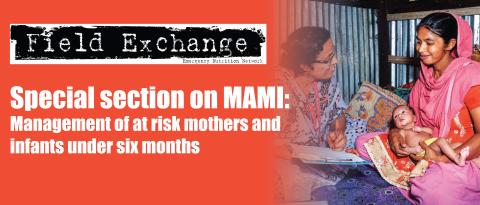Children who are both wasted and stunted are also underweight and have a high risk of death
Research snapshot1
Wasting and stunting tend to be addressed as separate issues, despite evidence of common causality and the fact that children may suffer simultaneously from both conditions (WaSt).
To answer outstanding questions about these children, a database of cross-sectional survey datasets (almost 1.8 million children) was analysed to determine the risks associated with WaSt, which children are most affected, and how best to reach them.
The analysis found that all children with WaSt were also underweight. Further investigation of the standards indicates that being <-2 z-scores weight-for-height (WHZ) and <-2 z-scores height-for-age (HAZ) translates to a maximum possible weight-for-age z-score (WAZ) of -2.35. The authors conclude that WaSt and “multiple anthropometric deficits” (i.e. being simultaneously wasted, stunted and underweight) are identical conditions. Therefore, as previous research indicates that mortality risk for “multiple anthropometric deficits” is high, the mortality risk for WaSt is high. The analysis also found that cases of WaSt can be detected with excellent sensitivity and good specificity using weight-for-age.
The authors conclude that routine reporting of the prevalence of WaSt should be encouraged and that therapeutic feeding programmes should cover WaSt cases, given the high mortality risk associated with the condition. Investigation of the extent to which current services are reaching WaSt cases and into treatment effectiveness, duration of treatment and relapse after cure (where they are being reached) is required. This analysis also contributes to a growing body of evidence suggesting that the conditions of being wasted and being stunted are positively associated with each other.
Endnote
1Myatt M, Khara T, Schoenbuchner S et al. Children who are both wasted and stunted are also underweight and have a high risk of death: a descriptive epidemiology of multiple anthropometric deficits using data from 51 countries. Archives of Public Health. 2018;76:28. doi:10.1186/s13690-018-0277-1.


